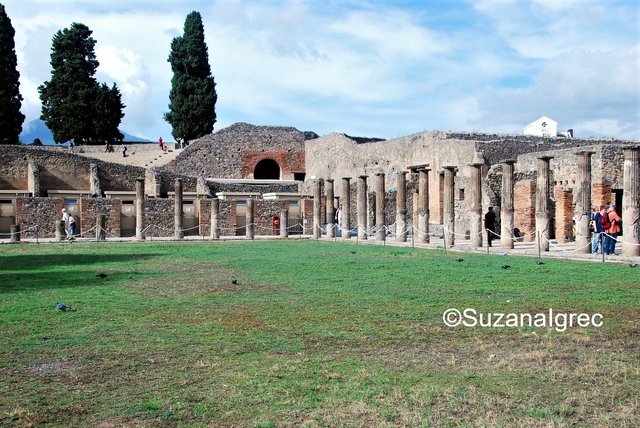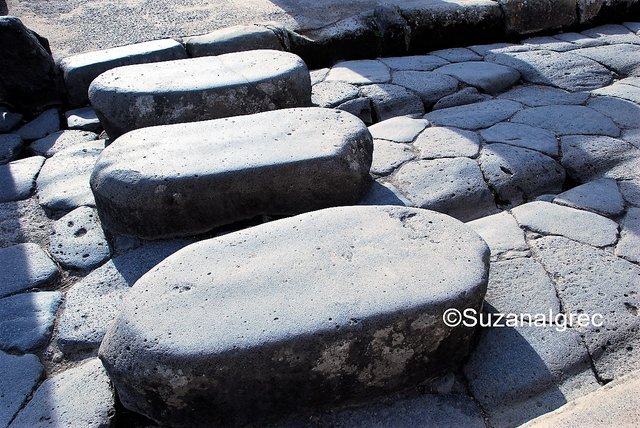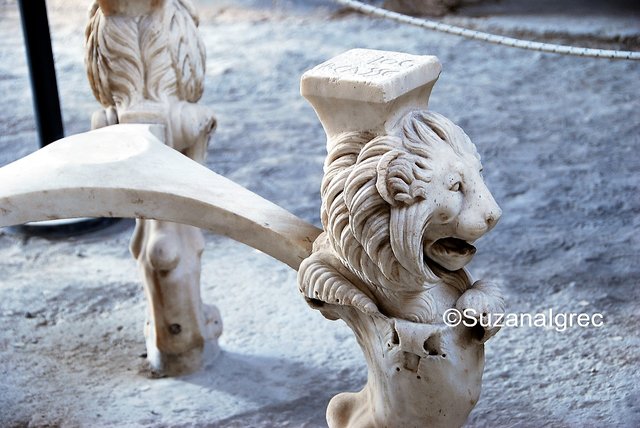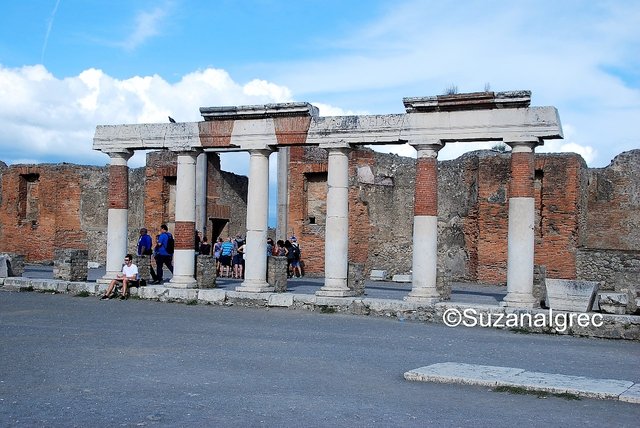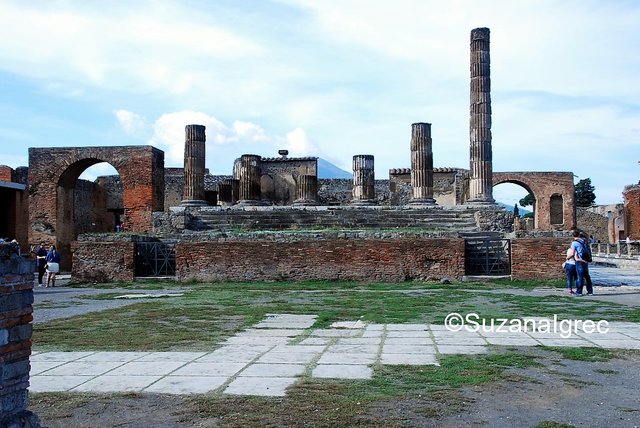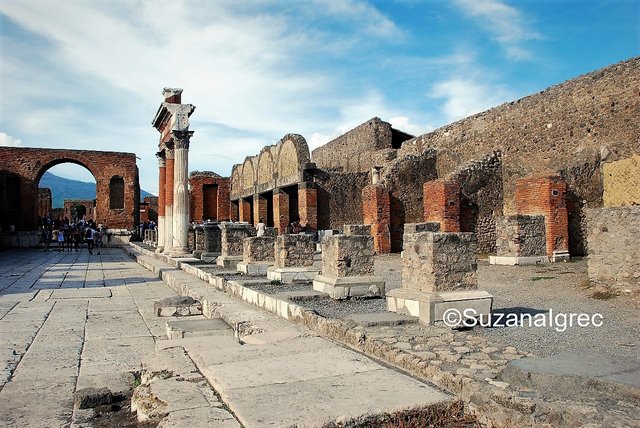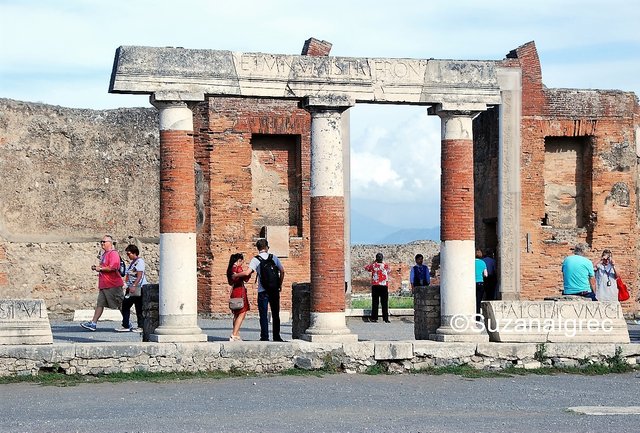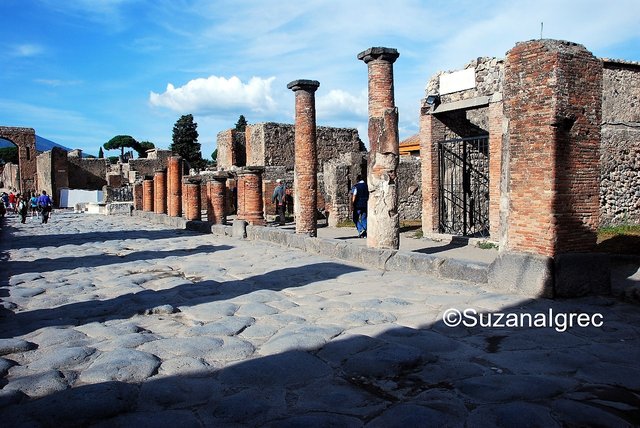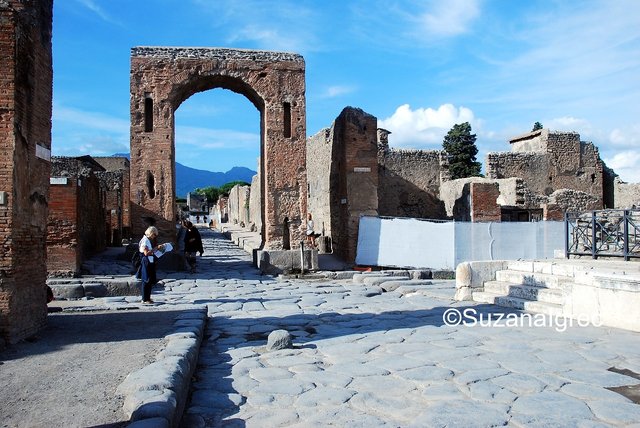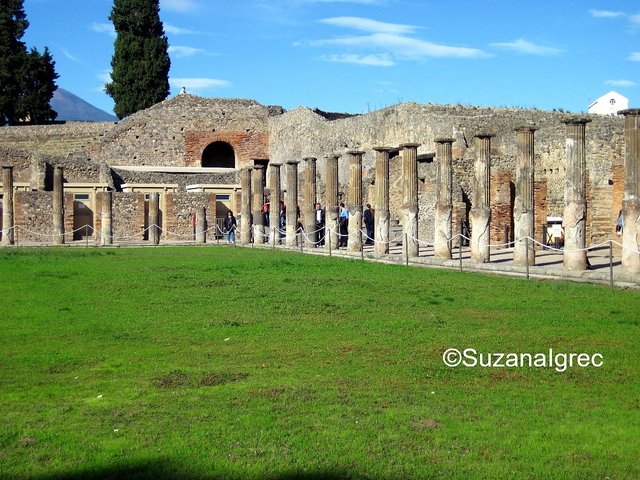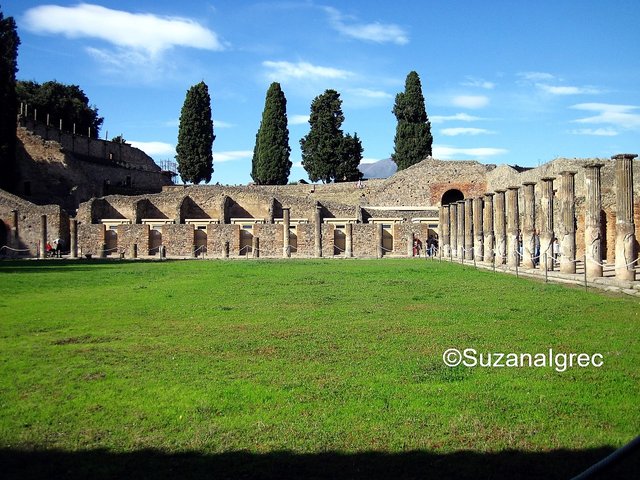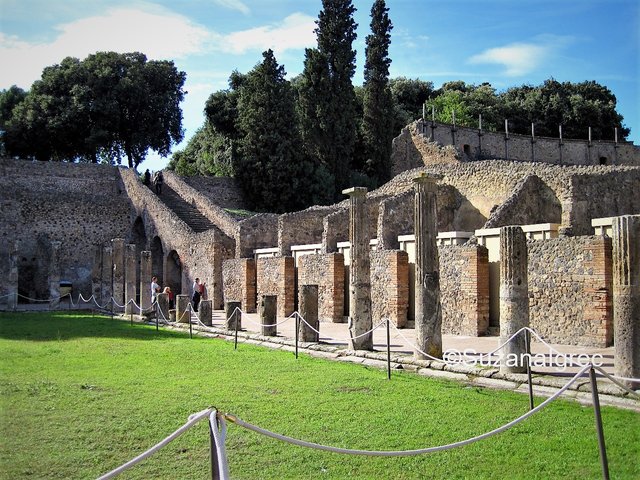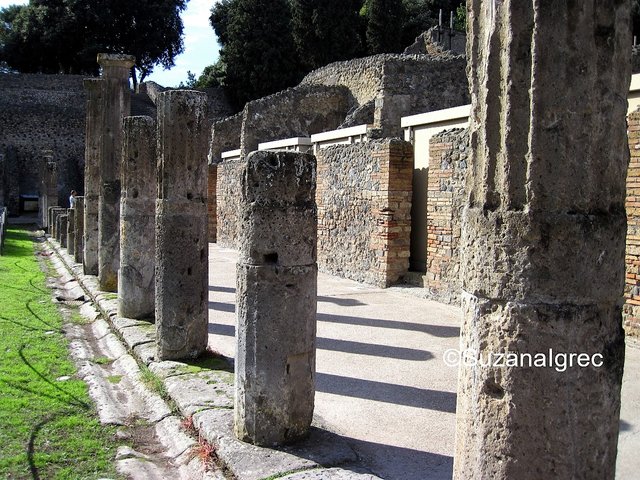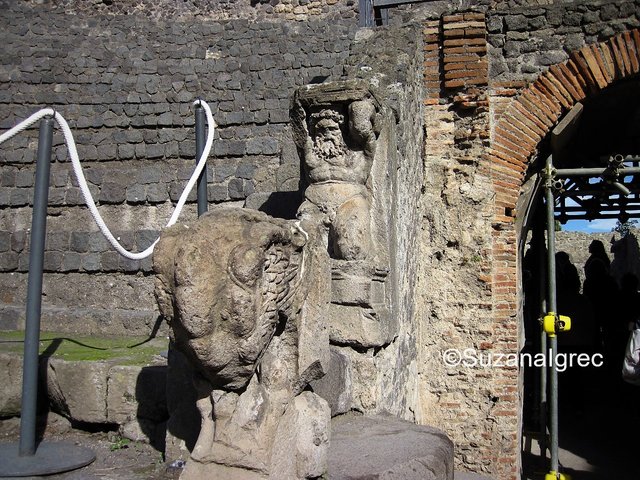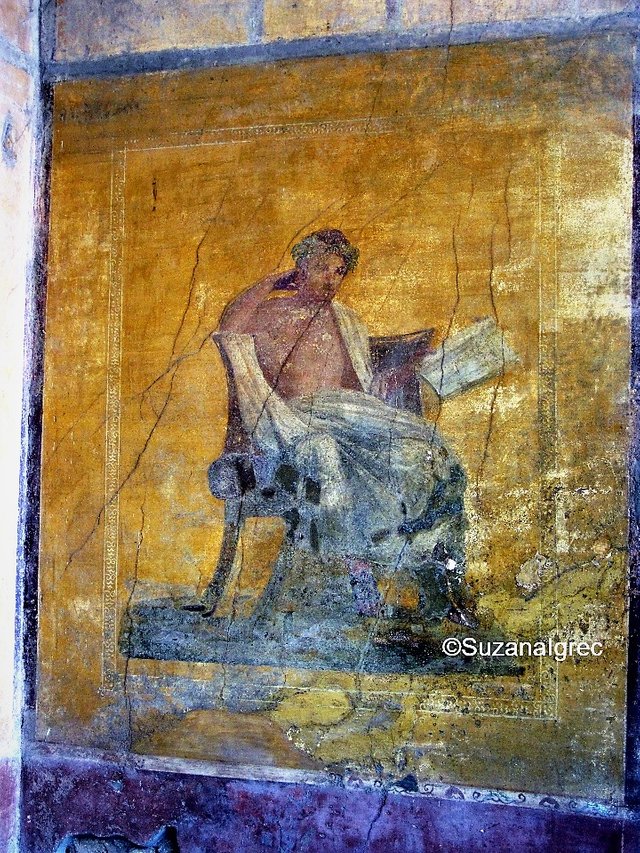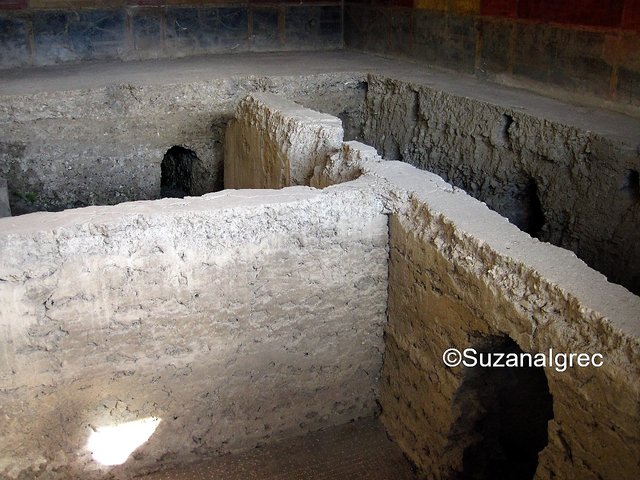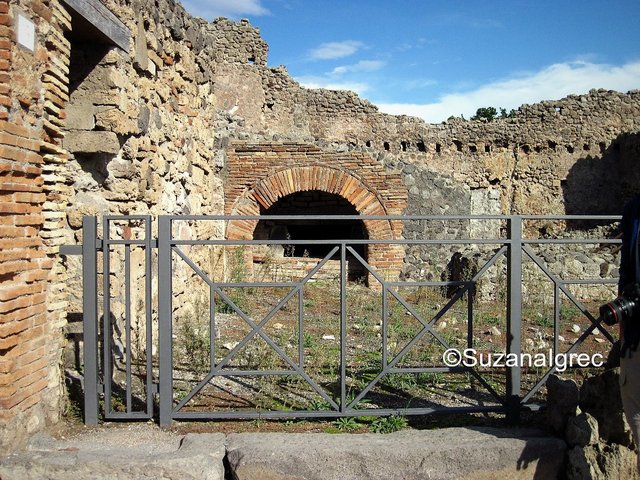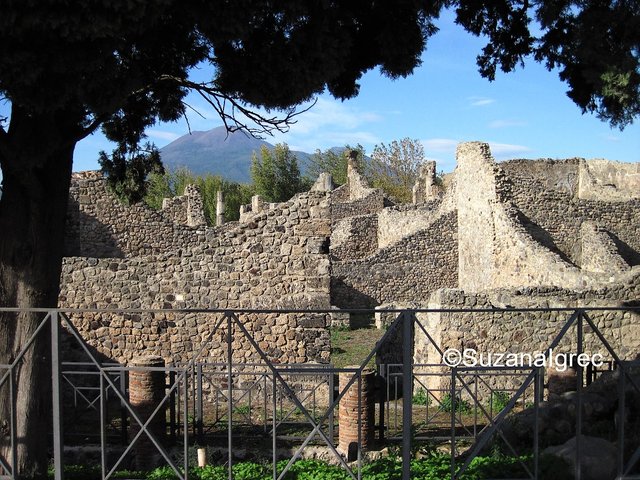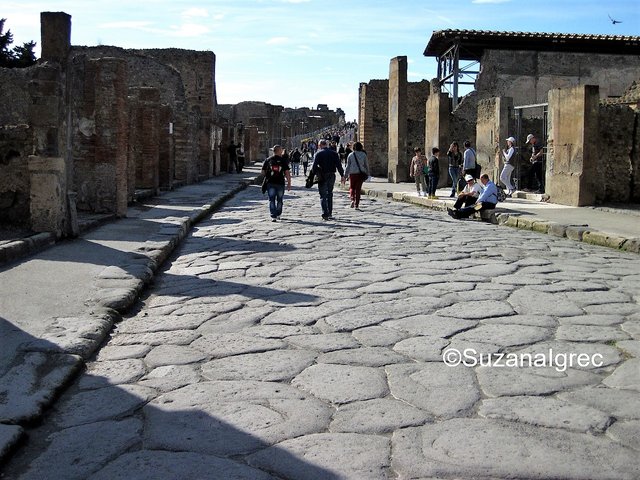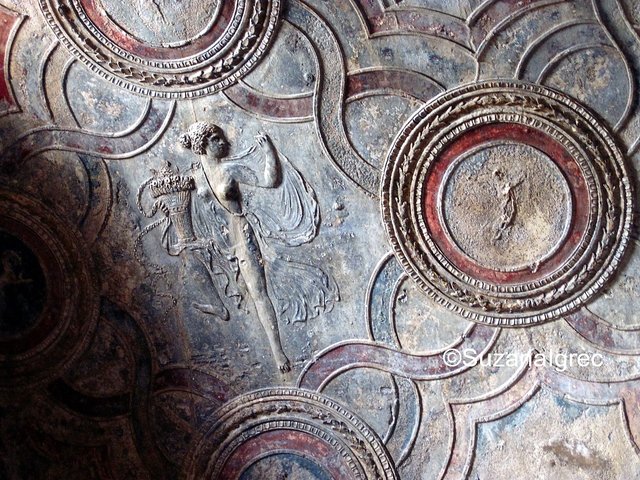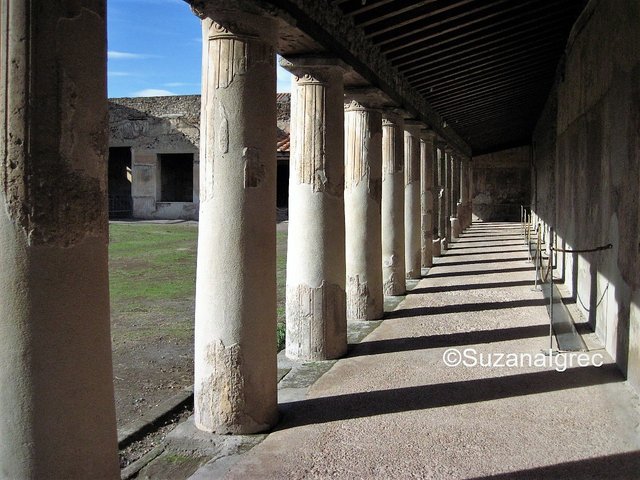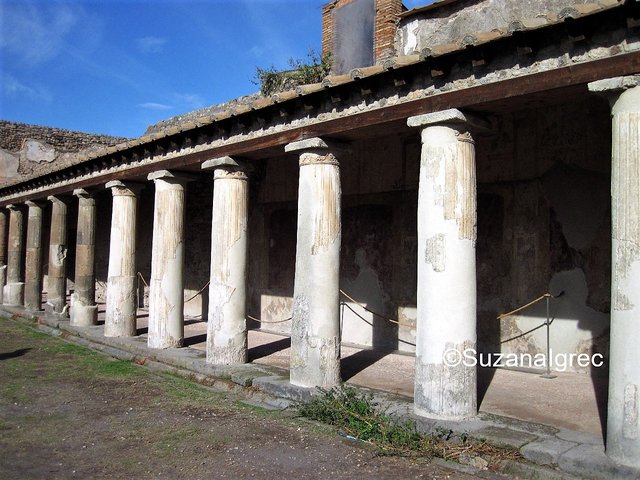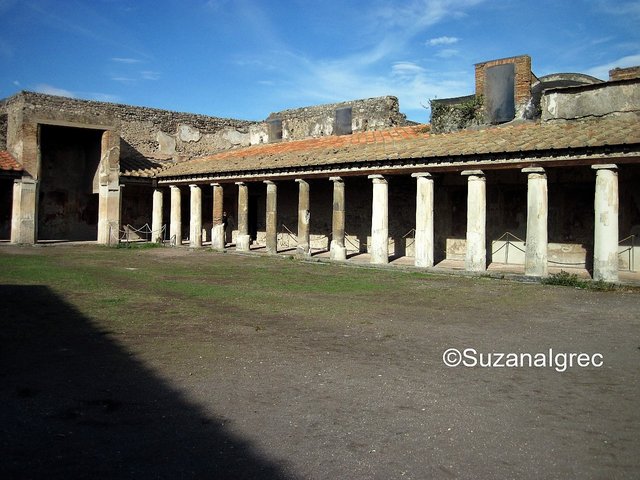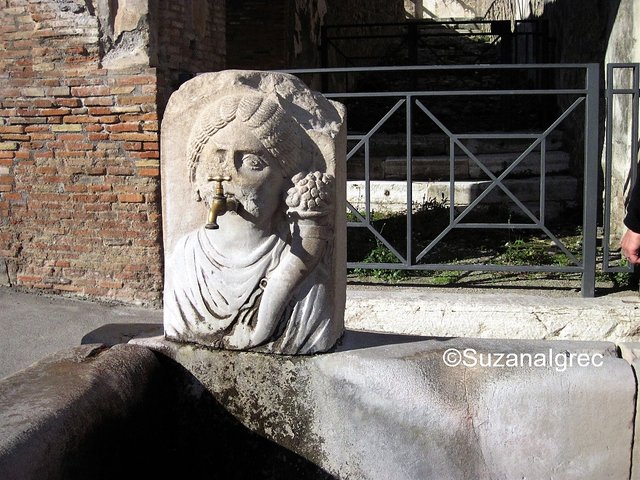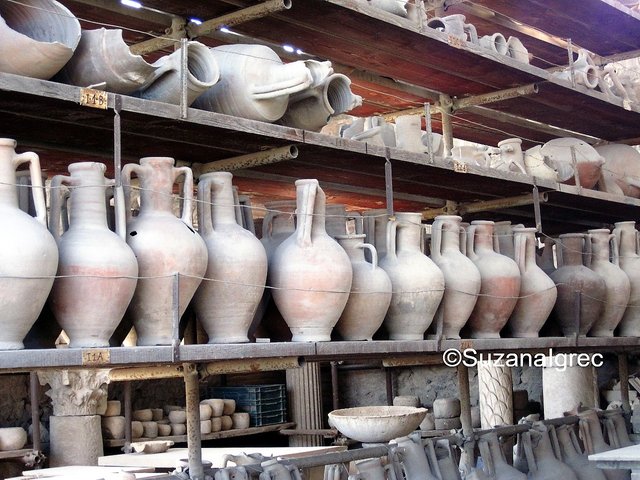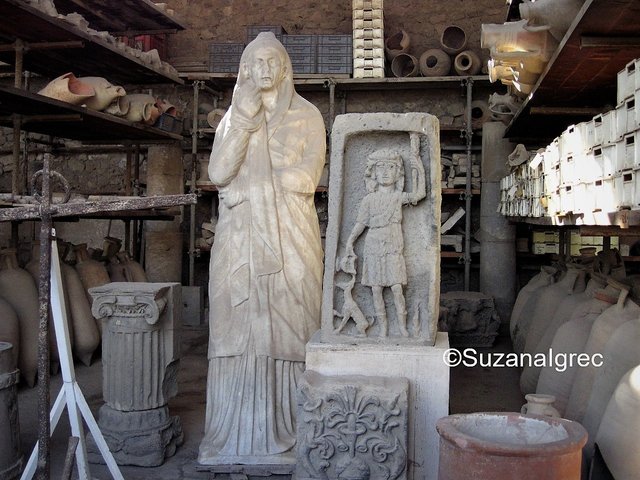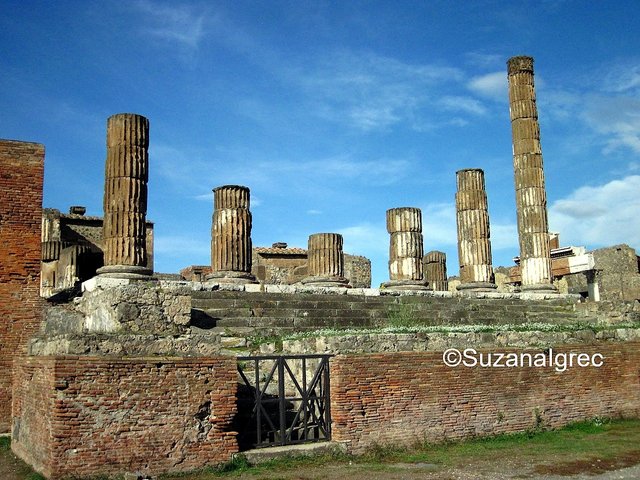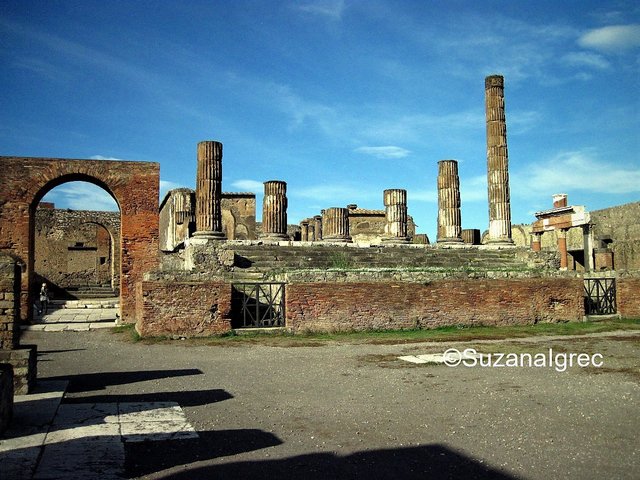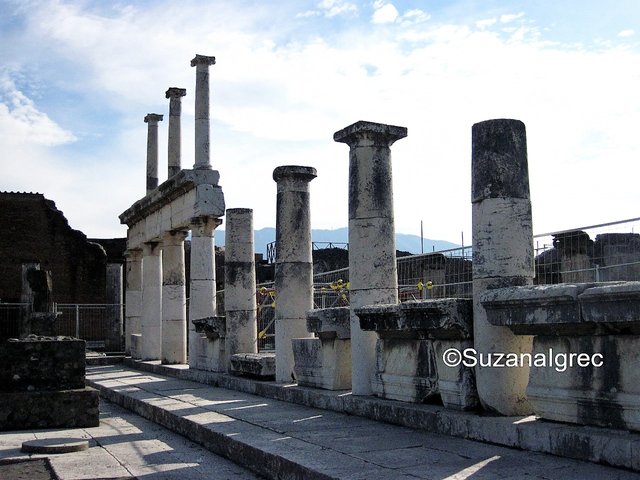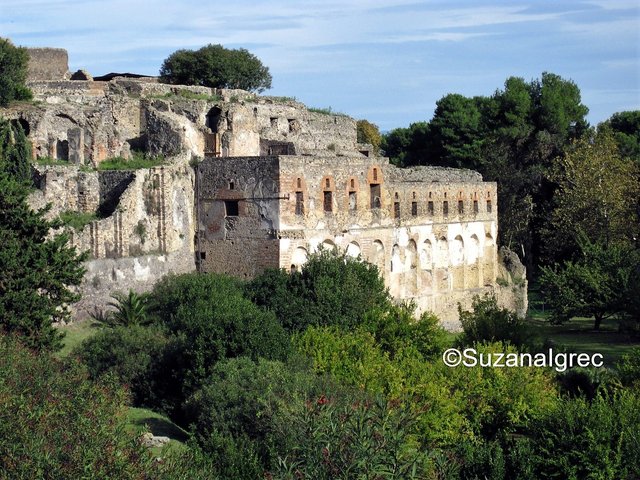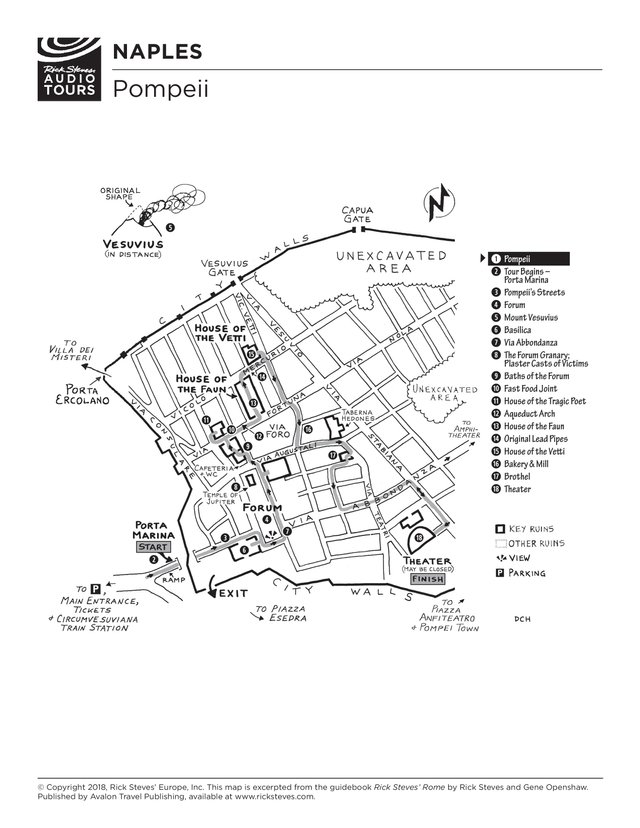
Few tips if you decide to go and visit Pompeii
- You can get entrance tickets on line before you get there and this will save you a lot of time since the site is huge and very busy with tourists. This is the official Pompeii site for buying tickets on line.
https://www.ticketone.it/biglietti.html?affiliate=ITT&erid=988882&doc=artistPages/tickets&action=tickets&fun=artist&language=en - Even if you go with a tour guide it is a good idea to take a map and download the tour from the link below, the reason why is because when I went with a tour guide it took just a second to lose my tour, I am telling you I just turned around and everybody was gone. If you have a back up plan you can still see the sites on your own and catch up with your tour later at the meeting point.
- Take plenty of water with you especially in summer time, the site is huge and there is nowhere inside to buy water.
You can get this map and download free audio tour for Pompeii from this site.
https://www.ricksteves.com/watch-read-listen/audio/audio-tours/italy
Lets learn something about this amazing site.
Mount Vesuvius, a volcano near the Bay of Naples in Italy, is hundreds of thousands of years old and has erupted more than 50 times. Its most famous eruption took place in the year 79 A.D., when the volcano buried the ancient Roman city of Pompeii under a thick carpet of volcanic ash. The dust “poured across the land” like a flood, one witness wrote, and shrouded the city in “a darkness…like the black of closed and unlighted rooms.” Two thousand people died, and the city was abandoned for almost as many years. When a group of explorers rediscovered the site in 1748, they were surprised to find that–underneath a thick layer of dust and debris–Pompeii was mostly intact. The buildings, artifacts and skeletons left behind in the buried city have taught us a great deal about everyday life in the ancient world.
Life in Pompeii
Ever since the ancient Greeks settled in the area in the 8th century B.C., the region around Mount Vesuvius and the Bay of Naples attracted wealthy vacationers who wanted to soak up the sun and the scenery. By the turn of the first century A.D., the town of Pompeii, located about five miles from the mountain, was a flourishing resort for Rome’s most distinguished citizens. Elegant houses and elaborate villas lined the paved streets. Tourists, townspeople and slaves bustled in and out of small factories and artisans’ shops, taverns and cafes, and brothels and bathhouses. People gathered in the 20,000-seat arena and lounged in the open-air squares and marketplaces. On the eve of that fateful eruption in 79 A.D., scholars estimate that there were about 20,000 people living in Pompeii and the surrounding region.
Mount Vesuvius
The Vesuvius volcano did not form overnight, of course. In fact, scholars say that the mountain is hundreds of thousands of years old and had been erupting for generations. In about 1780 B.C., for example, an unusually violent eruption (known today as the “Avellino eruption”) shot millions of tons of superheated lava, ash and rocks about 22 miles into the sky. That prehistoric catastrophe destroyed almost every village, house and farm within 15 miles of the mountain. But it was easy to overlook the mountain’s bad temper in such a pleasant, sunny spot. Even after a massive earthquake struck the Campania region in 63 A.D.–a quake that, scientists now understand, offered a warning rumble of the disaster to come–people still flocked to the shores of the Bay of Naples. Pompeii grew more crowded every year.
Sixteen years after that telltale earthquake, in August 79 A.D., Mount Vesuvius erupted again. The blast sent a plume of ashes, pumice and other rocks, and scorching-hot volcanic gases so high into the sky that people could see it for hundreds of miles around. (The writer Pliny the Younger, who watched the eruption from across the bay, compared this “cloud of unusual size and appearance” to a pine tree that “rose to a great height on a sort of trunk and then split off into branches”; today, geologists refer to this type of volcano as a “Plinean eruption.”)
As it cooled, this tower of debris drifted to earth: first the fine-grained ash, then the lightweight chunks of pumice and other rocks. It was terrifying–“I believed I was perishing with the world,” Pliny wrote, “and the world with me”–but not yet lethal: Most Pompeiians had plenty of time to flee. For those who stayed behind, however, conditions soon grew worse. As more and more ash fell, it clogged the air, making it difficult to breathe. Buildings collapsed. Then, a “pyroclastic surge”–a 100-miles-per-hour surge of superheated poison gas and pulverized rock–poured down the side of the mountain and swallowed everything and everyone in its path.
By the time the Vesuvius eruption sputtered to an end the next day, Pompeii was buried under millions of tons of volcanic ash. About 2,000 people were dead. Some people drifted back to town in search of lost relatives or belongings, but there was not much left to find. Pompeii, along with the smaller neighboring towns of Stabiae and Herculaneum, was abandoned for centuries.
Rediscovering Pompeii
Pompeii remained mostly untouched until 1748, when a group of explorers looking for ancient artifacts arrived in Campania and began to dig. They found that the ashes had acted as a marvelous preservative: Underneath all that dust, Pompeii was almost exactly as it had been 2,000 years before. Its buildings were intact. Skeletons were frozen right where they’d fallen. Everyday objects and household goods littered the streets. Later archaeologists even uncovered jars of preserved fruit and loaves of bread!
Many scholars say that the excavation of Pompeii played a major role in the neo-Classical revival of the 18th century. Europe’s wealthiest and most fashionable families displayed art and reproductions of objects from the ruins, and drawings of Pompeii’s buildings helped shape the architectural trends of the era. For example, wealthy British families often built “Etruscan rooms” that mimicked those in Pompeiian villas.
Today, the excavation of Pompeii has been going on for almost three centuries, and scholars and tourists remain just as fascinated by the city’s eerie ruins as they were in the 18th century.
INTERESTING FACTS ABOUT POMPEII - Pictures are not related to facts. These are just some photos I took while I was there and it will give you an idea what site looks like and what is to be expected.
1.The city and people of Pompeii did not know that Vesuvius was a volcano, as it hadn’t erupted in 1,800 years
2.It was extimated that just over 13% of the total population of Pompeii died in the initial blast. A population of around 15,000 people and an estimated 2,000 died.
3.Pompeii was originally settled around the 7th century BC by the Oscan people who were descendants of the Neolithic inhabitants of Campania (the region of southern Italy). The port city was in a prime location for trade as well as farming. The rich volcanic soil from earlier eruptions of Vesuvius created prime farmland for grapes and olive trees.
4.Pompeii is so well preserved because the city was buried so quickly by volcanic ash and it now provides snapshots of past life in a Roman city
5.Mount Vesuvius erupted destroying Pompeii shortly after noon on the 24th of August.
6.Pliny described the eruption as follows, “It resembled a (Mediterranean) pine more than any other tree. Like a very high tree the cloud went high and expanded in different branches….sometimes white, sometimes dark and stained by the sustained sand and ashes.”
7.The Ancient city of Pompeii was not discovered until 1748, when workers stumbled upon it while building King Charles III Palace.
8.Before the eruption of 79 AD there was not even a word for Volcano, which was created afterwards. Volcano derives from the word Vulcan - the Roman God of the Flame and Metal Forgery.
9.At a height of 1,281 metres high and estimated age of 17,000 years it's said that Mount Vesuvius has erupted over 50 times.
10.The Ruins of Pompeii are visited by over 2.6 million people per year.
11.Mount Vesuvius actually has two craters, one which was the original crater and another crater created when the top of the mountain caved in during a previous eruption.
12.The pyroclastic flows from the eruption can move at 450mph / 724 km/h with temperatures reaching as high as 1,830°F or 999°C.
13.The eruption of Mount Vesuvius in 79 AD over the cities of Pompeii and Herculaneum spewed 1.5 million tons of lava per second.
14.The objects buried underneath Pompeii were preserved for almost 2,000 years, but after being unearthed, natural and man-made forces have led to their decline. This has concerned archaeologists and Pompeii was included in the 1996 World Monuments Watch by the World Monuments Fund, and again in 1998 and in 2000. It has been estimated that $335 million are needed for the conservation of the site.
15.In 1819, when King Francis I of Naples visited the Pompeii exhibition with his wife and daughter he was so embarrassed by the erotic artwork that he decided to have it locked away in a secret cabinet, accessible only to “people of mature age and respected morals.”
16.Mount Vesuvius is the only active volcano on mainland Europe and is considered one of the most dangerous volcanoes in the world.
17.Mount Vesuvius erupted six times in the 18th century, eight times in the 19th century and in 1906, 1929 and 1944. There has been no eruption since 1944!!!
18.The Amphitheatre of Pompeii is the oldest stone building of its kind known to mankind, dating back to 80 BC.
19.Ancient Pompeii was particularly well known for producing its own fish sauce outside of town called Garum, referred to by Pliny the Elder himself who died during a rescue trip by ship during the eruption of Mount Vesuvius.
20.The Catastrophic eruption on the 24th, August 79 AD was said to have lasted more than 24 hours.
21.After a natural disaster the damage was so extensive and the effect of the tragedy so great that no attempts were made to reoccupy the area, maybe due to the fact that Pompeii was buried under 14 to 17 feet of ash and pumice. Looters, however, did return to Pompeii, digging tunnels through the ash and debris and making away with many of the city’s riches.
22.Had the eruption taken place on any other day, the people of Pompeii might have stood a better chance of escape. Usually the wind blew in a southwesterly direction, which would have blown the column out over the Bay of Naples. But on that fateful day, the wind was blowing in a northwesterly direction – straight over Pompeii.
23.The last eruption of Mount Vesuvius occurred in 1944, during the height of the Second World War, destroying U.S. bomber planes stationed a few kilometres away. A long period of calm usually means an eruption may happen soon.
24.Over 3 million people live in the immediate area of Mount Vesuvius. More people live dangerously close to it than to any other volcano anywhere in the world.
25.At 150-acres, the walled city of Pompeii is the world's largest excavation and archaeologist site.
26.Before the eruption, Pompeii was a famous location for rich Romans that spent holidays there.
27.Some of the homes in downtown ancient Pompeii had already been present since the year 300 BC. Therefore, by 79 AD and the time of the eruption, these houses were older than what America is today.
28.In Greek mythology - Servius informs us that the name Pompeii derives from pumpe, which was the commemorative procession in honour of Hercules’ victory over the giants.
29.Following seismic activity and coastal changes, Pompeii now stands 2km inland but it would have been much closer to the sea and the mouth of the Sarno in Roman times and around four metres lower.
30.Even Nero the Roman Emperor is thought to have had a villa or holiday home near Pompeii and it is to be remembered that his wife Poppaea Sabina was a native of the town.
From Rome to Pompeii via train
https://www.italiarail.com/pages/routes/pompeii-to-rome
Top 10 cities you must visit if in Italy
https://www.tripsavvy.com/top-ten-cities-in-italy-1547758
